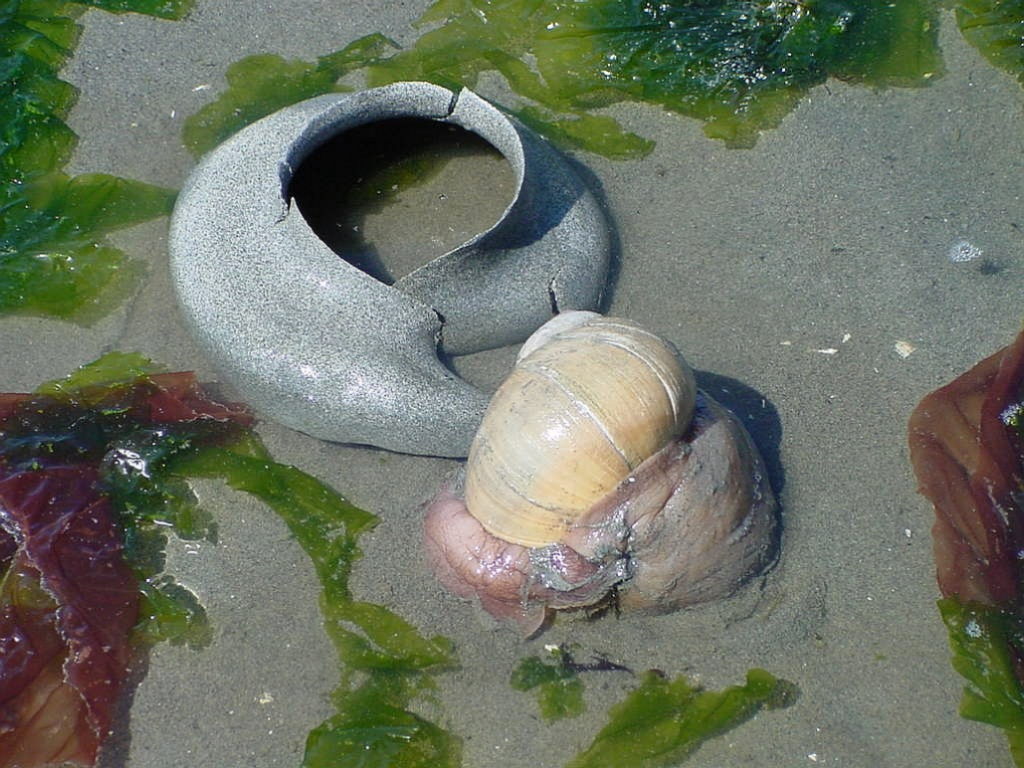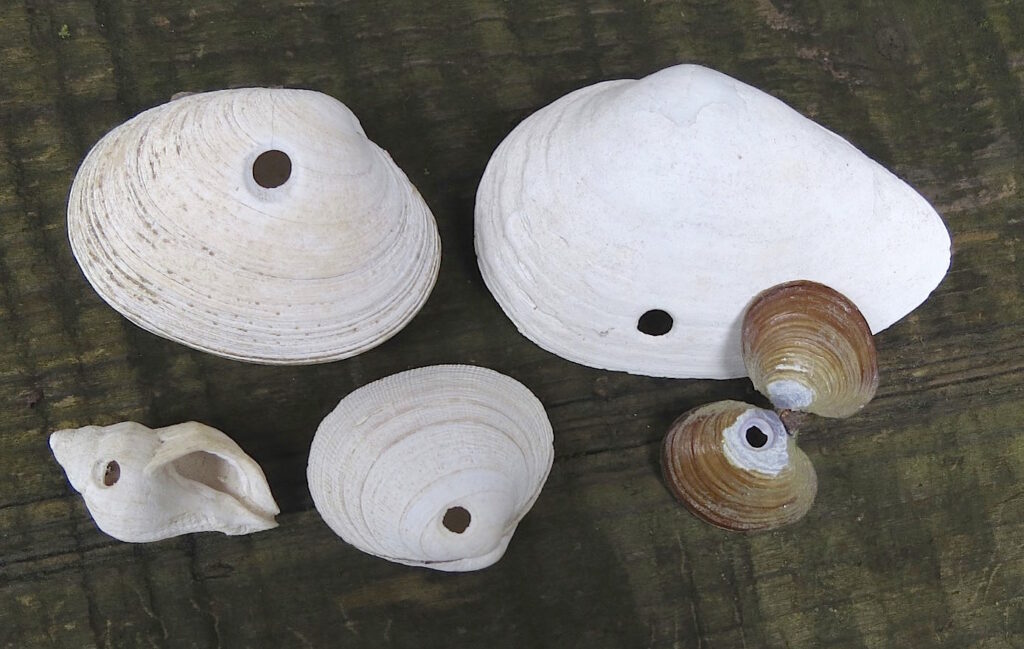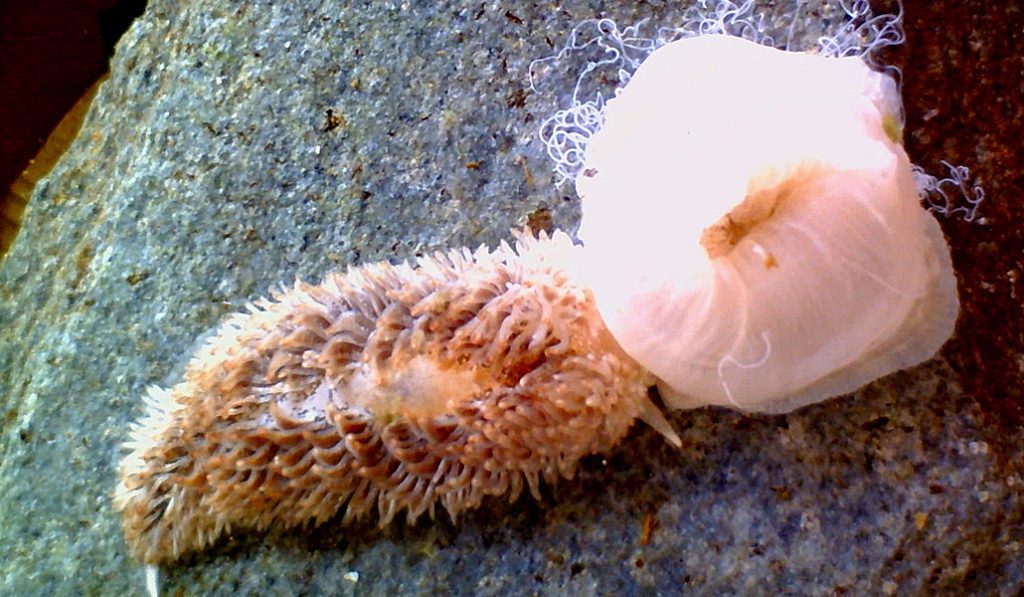While Spring may be off to a drizzly start, it sure has made up for it with some fantastic low tides! This past Tuesday was no exception when Grade 11 & 12 science students from Richmond Christian School participated in our Marine Investigations (https://galianoconservancy.ca/marine-investigations/) program at Sum’nuw (Montague Harbour Marine Provincial Park).
We started off the day walking across the brilliantly-white, shell beach (a relic of millenia of sustainable shellfish harvesting by Coast Salish Peoples) to the rocky intertidal area. Thanks to such a low tide we found sandy Moon Snail egg casings – the first time we’ve come across them in YEARS!
When she is ready to lay eggs, Mama Moon Snail sinks to the ocean floor and collects sand with her huge foot. She then sticks the sand together with her slime to form a flexible collar, which almost looks like abandoned pottery lying at the bottom of the sea. Her eggs are laid in the jellified-sand and she sits in the middle until they are ready to hatch. The size of the hole in the middle of Moon Snail egg casings give you a good idea of the size these mega-marine snails grow up to be!
Moon snails are voracious shellfish-hunters. Have you ever seen a clam shell laying on the beach with a perfectly drilled hole in the middle? Well that clam was a Moon Snail’s lunch. Moon snails have a drill-like tongue called a “radula” that they use to bore a hole into the shell. From there, they excrete a saliva-like substance into the clam which disintegrates its tissues and transforms it into a clam-smoothie. Bottoms up!

Moon snail beside egg casing, Seattle Aquarium, May 2016, https://www.seattleaquarium.org/blog/what-are-those-gray-toilet-plungers-beach

Putting our field science skills to the test, we took a deeper dive into our intertidal investigation by performing Belt Transects. Using meter tapes and quadrats, students analyzed the abundance of oysters along the intertidal zone to hypothesize which part of the intertidal zone oysters prefer to live in. We came to the conclusion that oysters are the “Goldilocks” of the intertidal zone and prefer it not too wet and not too dry but juuuust right.
We ended the day at Sum’nuw’s subtidal dock where students peered over the edge while teaching their peers about intertidal invertebrate species & classifications. With one last stroke of luck we found two different species of nudibranch one of which, the “Shaggy Mouse”, became a class favourite.

“I loved having so much time to explore and interact with real sea creatures”- Shannen, 16
“I liked getting to see and understand my local culture, marine animals and habitat better.”– Madeline, 16

